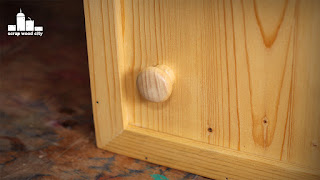Tools and materials I propose:
I just got a new table saw and I had to make a new cross cut sled. To me this the first thing one must make with the a table saw. It is really useful in so many woodworking projects.
First of all I made the rails using pine. I kept moving the fence slightly until the wood fit nicely in my table saw’s grooves. I then made the two rails.
Next I used washers as spacers. I placed them inside the grooves of the table saw. Then I added the rails. Now the rails were just above the surface of the saw.
I glued the rails with the sled’s base and added a few nails to keep things in place. Then I secured the rails with screws. I first predrilled pilot holes and then I counter sinked them. I trimmed the rails flush with a flush trim saw.
The base of my sled is made out of 12mm plywood. The top pieces were made out of 25mm plywood.
I cut the top pieces to size. Then I did the first cut on the sled. This gave me a reference line. I then glued the back piece perpendicular to that line. It is important that this was exactly 90 degrees. Otherwise the sled won’t be accurate.
I then screwed the top pieces in place. The front piece doesn’t need to be accurate, it’s there just for support.
At this point I used the sled itself to cut a small piece. This small piece will help me keep my thumb out of the blade’s way. I glued and nailed it in place.
I then cut a pine piece and glued it on top of the front piece. I then rounded over it’s edges with a hand plane and a chisel. This makes it nicer to the touch.
To make the sled run smoother, I finished the bottom with three coats of clear water based varnish. I applied three coats in total while lightly sanding between coats. I also used the heat gun to speed up the drying process between coats.
Lastly I lubricated the rails with my homemade beeswax and mineral oil finish.
My sled came out great and it is really useful.
I hope you liked this one, because that was it. See you soon with a new project video.
Disclosure: Some of the links below are affiliate links, meaning, that at no cost to you, I get a small commission if you click through and make a purchase.












































